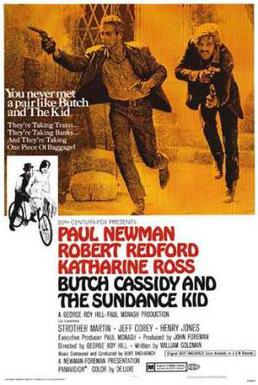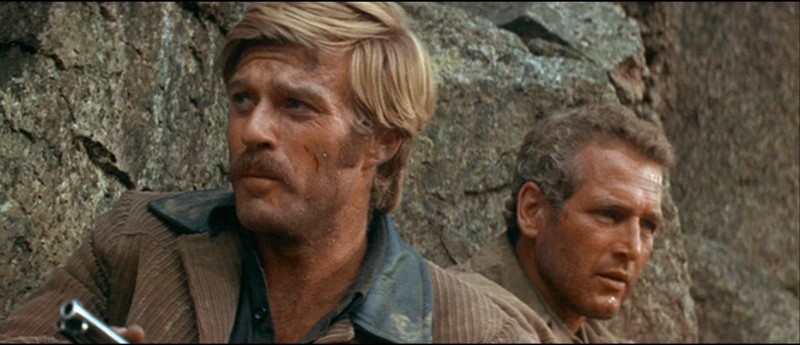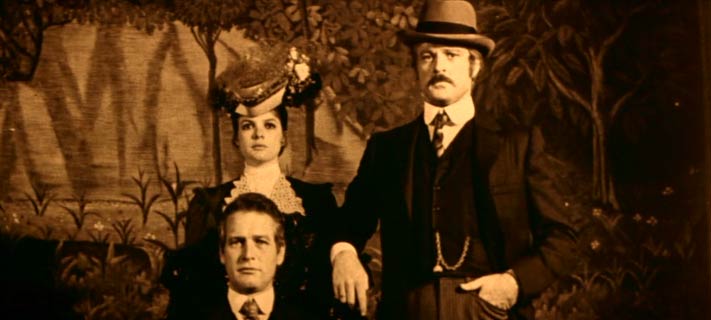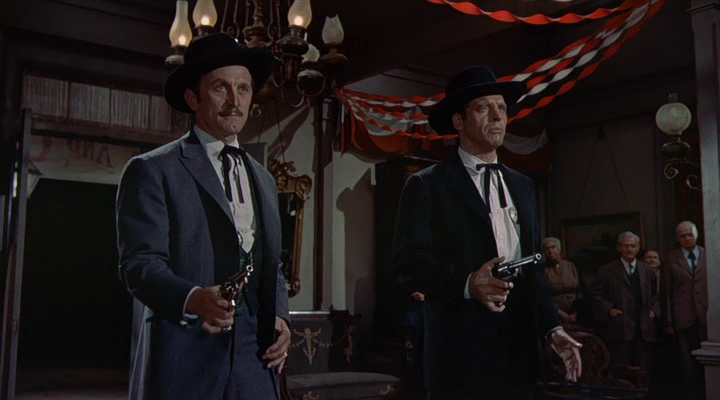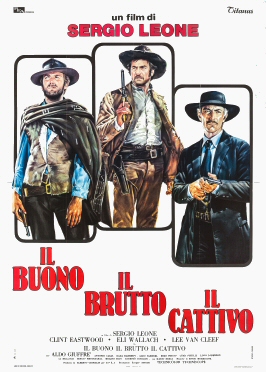 #471- The Good, the Bad and the Ugly (1966)
#471- The Good, the Bad and the Ugly (1966)Starring: Clint Eastwood, Lee Van Cleef, Eli Wallach
Directed by: Sergio Leone
Plot Summary: During the Civil War, Mexican bandit Tuco Ramirez is ambushed by bounty hunters, but is saved by the mysterious Blondie, where they then form a business partnership of collecting bounties on Tuco's head and saving him at the last second. They stumble upon a dying fugitive named Bill Carson, who has information about a cache filled with 200,000 dollars of Confederate gold. Carson tells Tuco the graveyard where the gold is buried, and tells Blondie the name on the grave. Tuco and Blondie disguise themselves as Confederate soldiers and are taken to a Union prison camp, where they meet the ruthless Angel Eyes, who has also been searching for the gold. Angel Eyes tortures Tuco to get his information on the gold's whereabouts and forms a partnership with Blondie to split the gold between the two of them. Once Blondie is able to get away from Angel Eyes, he reforms his original partnership with Tuco. When all three men arrive at the graveyard, it is agreed that the three of them can't share the gold, so the gold will go to the two men that survive a three-way Mexican standoff.
When I started this whole Western month, there was only one objective I had in mind: to see The Good, the Bad and the Ugly. There are usually two types of Western fans out there. There are those who idolize John Wayne as the great American cowboy, or those who prefer Clint Eastwood as a more rugged and gritty outlaw type of anti-hero. I remember having a discussion with my uncle last year about his experience with Westerns when he was growing up and he told me that him and his brothers grew up at a very unique time to be a Western fan, as they were able to see the twilight years of John Wayne's career and the beginning stages of Clint Eastwood's career. From that conversation, I knew there was only one conclusive thing I could do to formulate my opinion, which was to watch a handful of John Wayne and Clint Eastwood movies to see which style I preferred better.
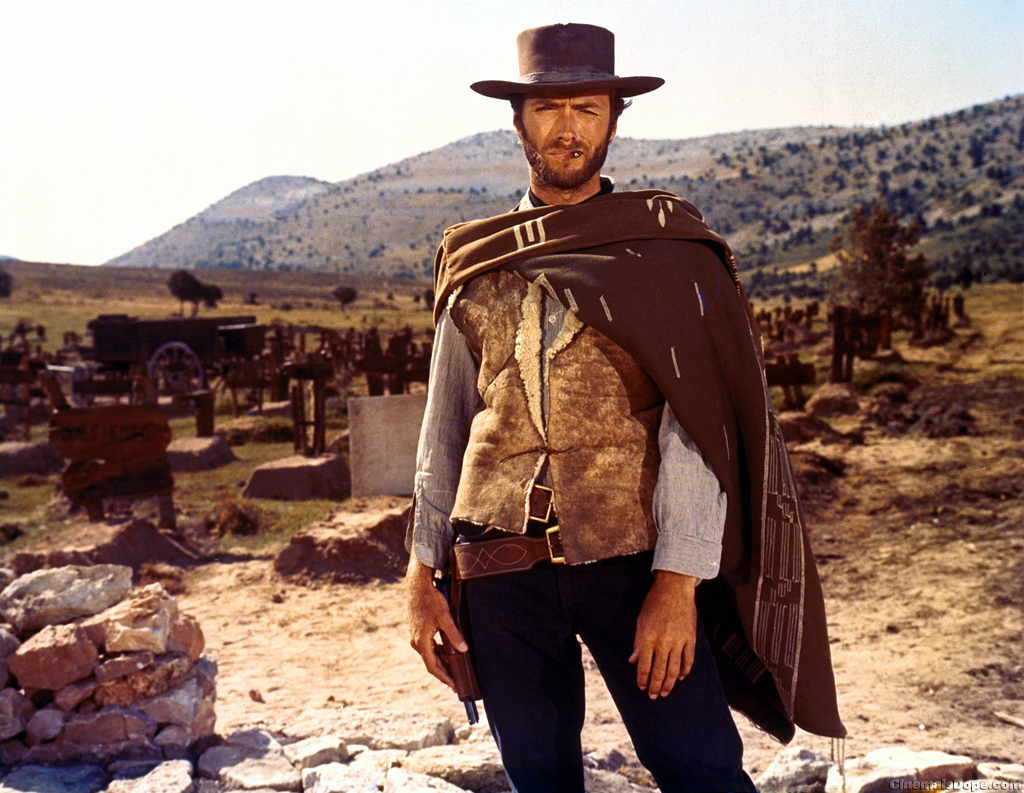 The star of the film, as well as being "The Good," is Clint Eastwood as Blondie. Eastwood is actually known as "The Man with No Name," a character that is used throughout Sergio Leone's Dollars Trilogy and has a different nickname in each film. Like I said in the intro, Eastwood is a very different type of leading man than John Wayne was. Instead of being the traditional cowboy who upholds justice and being the epitome of good, Eastwood plays an outlaw with enough charisma and attitude to pull the audience into rooting for him. There are way too many scenes where you will be left in amazement of how cool of a character Blondie is, and a lot of that has to do with the performance given by Eastwood, who was still a relatively new actor at the time and this was the role that started his legacy as one of the most celebrated entertainers in film history. Eastwood's look also adds a lot to modern Western pop culture, making it cooler to be an outlaw than a cowboy.
The star of the film, as well as being "The Good," is Clint Eastwood as Blondie. Eastwood is actually known as "The Man with No Name," a character that is used throughout Sergio Leone's Dollars Trilogy and has a different nickname in each film. Like I said in the intro, Eastwood is a very different type of leading man than John Wayne was. Instead of being the traditional cowboy who upholds justice and being the epitome of good, Eastwood plays an outlaw with enough charisma and attitude to pull the audience into rooting for him. There are way too many scenes where you will be left in amazement of how cool of a character Blondie is, and a lot of that has to do with the performance given by Eastwood, who was still a relatively new actor at the time and this was the role that started his legacy as one of the most celebrated entertainers in film history. Eastwood's look also adds a lot to modern Western pop culture, making it cooler to be an outlaw than a cowboy.Angel Eyes, played by Lee Van Cleef, is "The Bad." Van Cleef, who has appeared in minor roles in Gunfight at the O.K. Corral and The Man Who Shot Liberty Valance, gives the character a very menacing presence through the use of a sly grin and sharp, narrow eyes (hence his nickname). In all honesty, Angel Eyes is the character with the least amount of screen time out of the three leads, but in this case, sometimes less is more as he is able to leave a lasting impression with the audience through a limited amount of scenes. Within his introduction, he is able to utilize his grin and stare and is proves to be a formidable antagonist, and uses little to no words for most of the scene. Only towards the end of the scene does he actually talk, but by then, you KNOW that he is going to be a character worth remembering throughout the film.
"The Ugly" is Tuco Ramirez, played by Eli Wallach. Wallach is that nice bridge between Blondie and Angel Eyes, where the audience being unsure if Tuco is a good guy or a bad guy. In hindsight, most of the characters have villainous tactics, but it is Tuco that is the least trustworthy of the three, but is also the most fun. He has many great lines and moments that range from hilarious to epic, including one scene where he tells a character off on why they shouldn't monologue before shooting him. However there are some really good scenes in which he develops a respectful partnership with Blondie, and a scene with Tuco's brother that unveils a lot about how Tuco's biggest demon is his greed and all that it has cost him. A lot of these scenes are actually thoroughly enjoyable, and all the more reason of why Tuco STILL isn't a trustworthy character, because despite all these admirable qualities, he will still sell you out for a shot at riches.
Only on rare occasion do I find it important to mention a film's music when discussing the important aspects of the film. THIS is the kind of film that is worth mentioning for its music. The score by Ennio Morricone offers three of my all-time favorite songs in movie history. Of course there is the film's theme song that is so iconic that anybody could reference what movie it's from by listening to it. But there are other songs that are iconic through the scenes they are used in. The famous graveyard scene where Blondie, Angel Eyes, and Tuco face off in a three-way Mexican standoff is highlighted by the songs "The Ecstasy of Gold" and "The Triple Duel." Add in great cinematography through the use of camera cuts and close ups and you have a recipe for great storytelling both visually and audibly. Don't believe me? Then watch the scene in its original form and then repeat the scene but without sound, it has an entirely different feel to it which illustrates that in order to properly execute the scene, both sound and visuals are necessary.

The Good, the Bad and the Ugly has a lasting film legacy in four areas. The first is Westerns, obviously, as it is one of the most recognizable names in the genre. The second is the career of Clint Eastwood (which I mentioned earlier), because without this film, he might not be the screen legend that he is today. The next two might be a little surprising, but the third is in the context of movie prequels. While the film is the final installment in the Dollars Trilogy, there are enough plot details that indicate that it takes place BEFORE A Fistful of Dollars and For a Few Dollars More. And the final subject is for foreign films. If you paid attention to some of the odd looking dubbing for the film, then you will notice that this isn't a purely American film. In fact, it is actually an Italian film instead. The amount of genres that this film fits within cements its rich value in cinematic history.
Rating: 5 out of 5 stars
WOW! Just WOW! The Good, the Bad and the Ugly lived up to every expectation I had for it and became an instant favorite of mine. Without a question this is the best Western I've seen so far and I personally recommend everyone see it and own in your DVD collection.
Comment below to share your thoughts on the movie or to discuss a topic that I left out of my review
The Good, the Bad and the Ugly and movie images are copyrighted by United Artists



